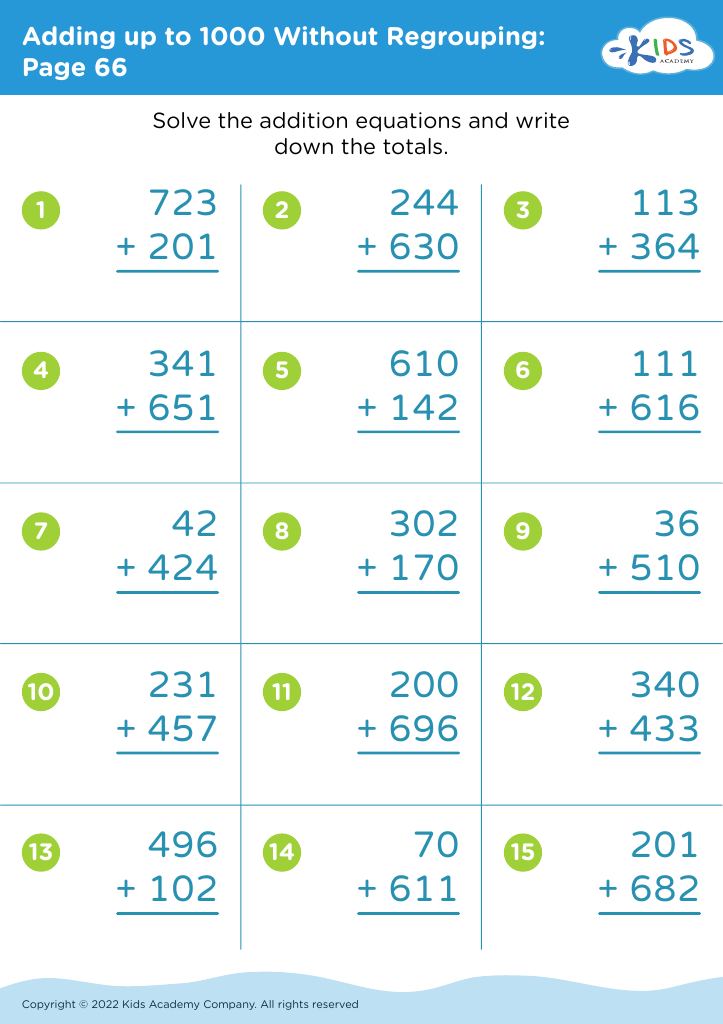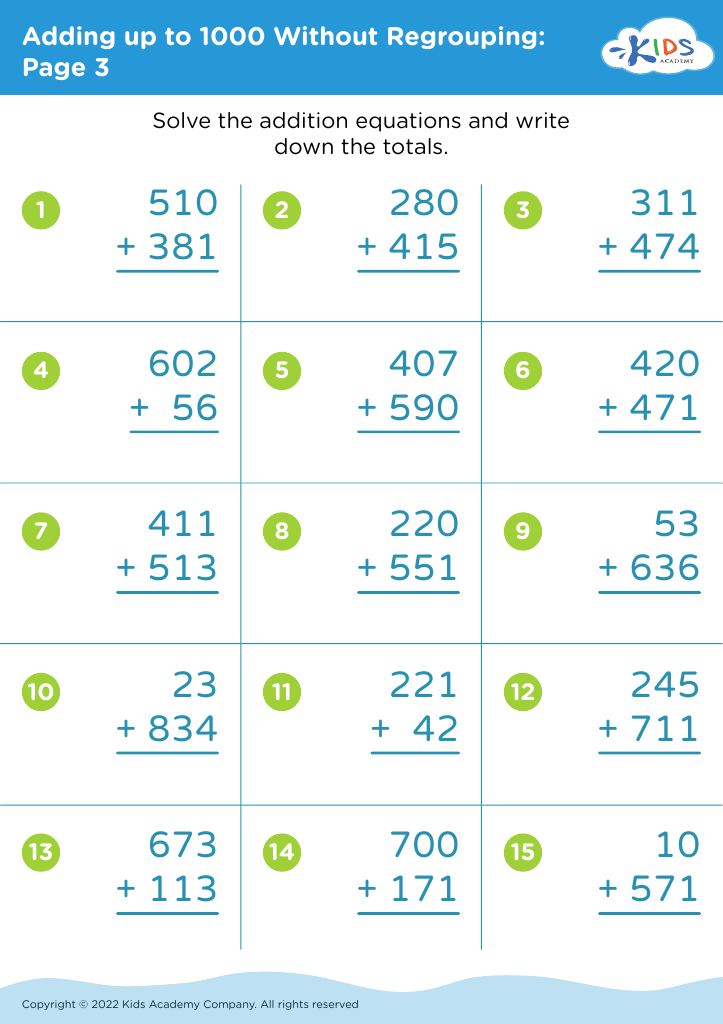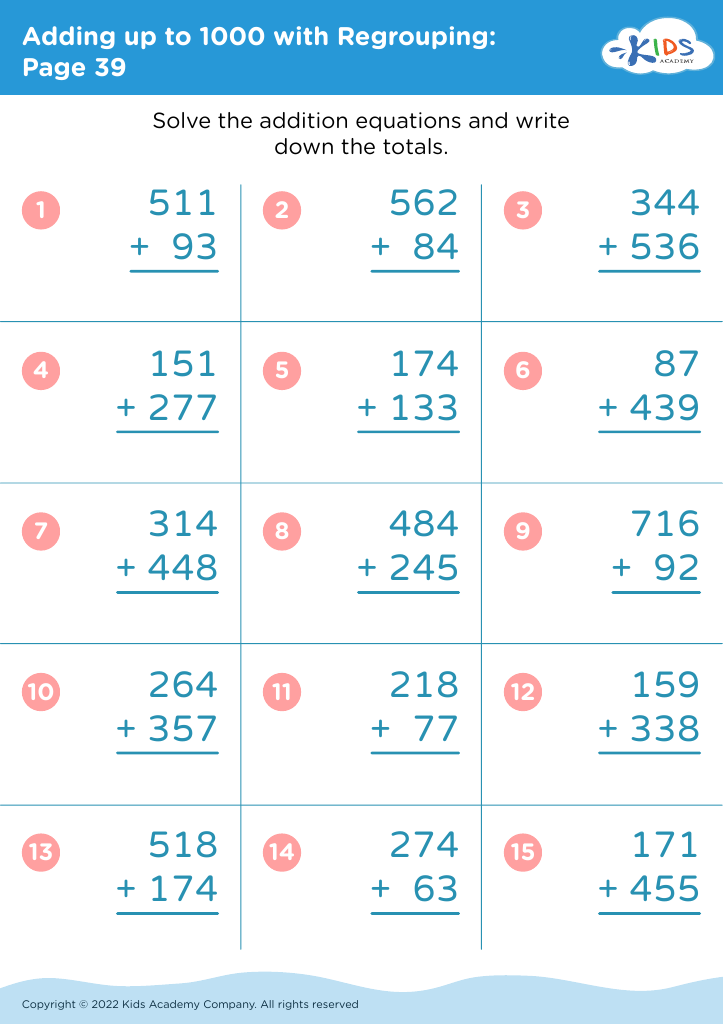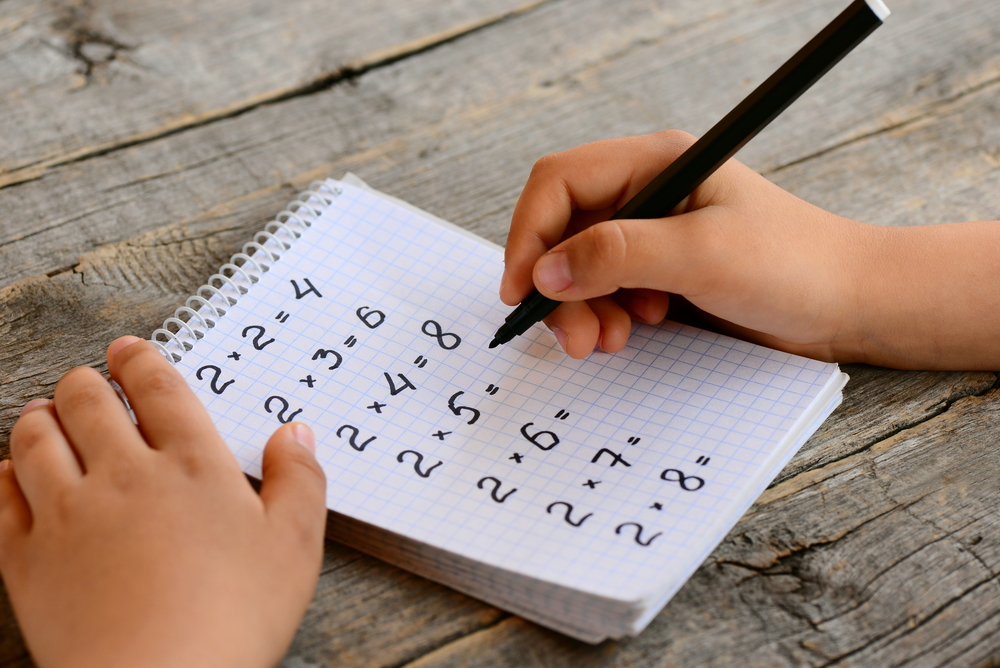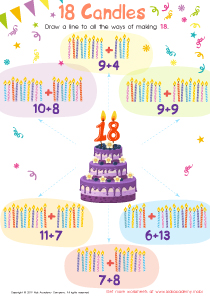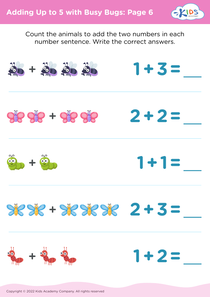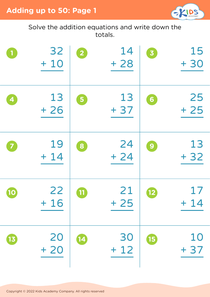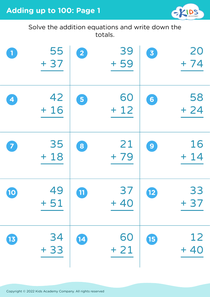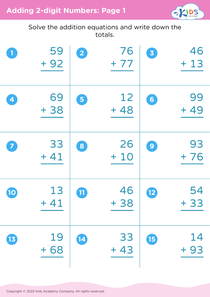Recognize shapes Adding up to 1000 Worksheets for Ages 7-9
4 filtered results
-
From - To
Explore our engaging "Recognize Shapes Adding Up to 1000 Worksheets" designed specifically for kids aged 7-9. These worksheets combine the exciting world of shapes with essential math skills, helping young learners practice addition while enhancing their shape recognition abilities. Each activity is crafted to reinforce mathematical concepts through fun visuals and interactive tasks. Students will learn to identify various shapes and apply their knowledge as they solve problems that add up to 1000. Perfect for reinforcing classroom learning or for home practice, these worksheets ensure a dynamic and effective learning experience. Get started today and watch your child thrive in math!
Recognizing shapes and mastering basic arithmetic concepts, such as adding up to 1000, are fundamental skills for children aged 7-9. Parents and teachers should care about these skills because they form the foundation for critical thinking and problem-solving abilities essential for later academic success.
Understanding shapes helps children develop spatial awareness, which is important in everyday activities, from navigating their environment to understanding graphs and charts. It encourages creative thinking and a better grasp of geometry, which is integral in fields like engineering and architecture.
Moreover, mastering addition, especially with larger numbers like summing to 1000, fosters numerical fluency. This competency is crucial for more advanced mathematics concepts they will encounter in later grades. It aids in building confidence and enthusiasm for math, reducing anxiety that commonly arises from more complex calculations.
Additionally, these skills are interconnected; recognizing shapes involves measuring and calculating perimeter and area, often leading to addition and subtraction practices. Thus, fostering both shape recognition and number fluency is vital, not only for academic development but also for life skills. Engaging with these concepts early on ensures that children are well-prepared for future learning and challenges.

